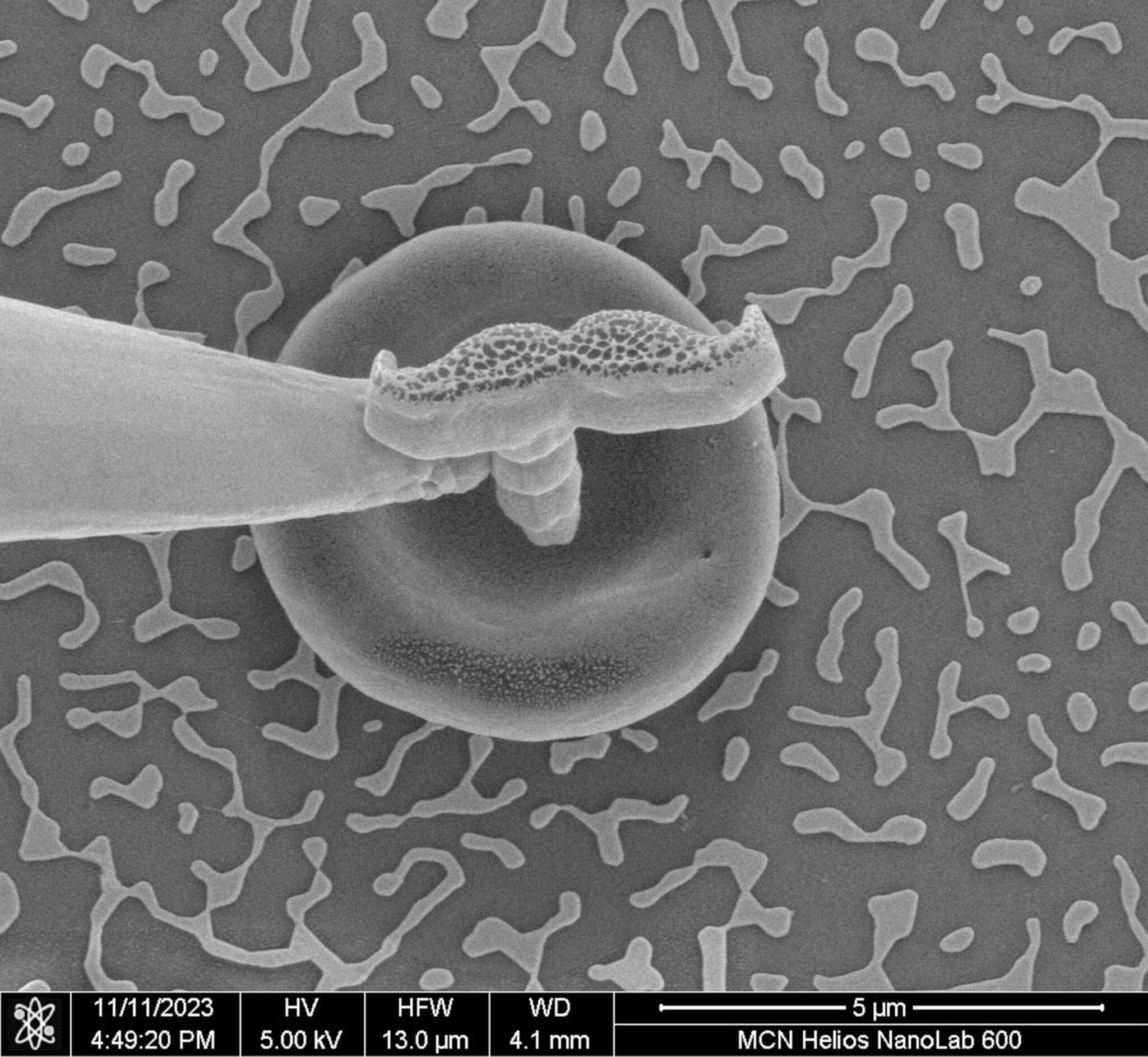Blood
World’s tiniest mustache successfully fitted onto red blood cell
MELBOURNE — Australian scientists have achieved a remarkable feat — by creating the world’s smallest mustache on a red blood cell, measuring only 5 microns. This microscopic mustache, invisible to the naked eye, was crafted to highlight the crucial role of blood donation in men’s health.
The concept originated from the Australian Red Cross Lifeblood organization in collaboration with Movember, a global men’s health charity. The mustache was meticulously placed on a single blood cell by a team from The Australian National Fabrication Facility’s Melbourne Centre for Nanofabrication (MCN) and the Ramaciotti Centre for Cryo-Electron Microscopy at Monash University.
This initiative involved collecting a blood cell from a volunteer donor in Melbourne. The MCN team then employed a sophisticated FIB-SEM (Focused Ion Beam Scanning Electron Microscope) to capture an image of the tiny mustache.
“FIB-SEM is capable of imaging structures as small as 1/10,000th of the width of a human hair, by employing high-energy beams of metal ions to etch and deposit tiny structures,” says Bernie Orelup, Engineering & Operations Manager at MCN, in a statement per SWNS. “The process to make the mustache is akin to constructing a miniature ‘Mr. Potato Head’ accessory, we meticulously crafted the tiny ‘Mo’ by layering 3D printed polymer resin on a tiny stalk and delicately attaching it to a single red blood cell using a micromanipulator. The intricate process, using state-of-the-art nanofabrication techniques, allowed us to create a symbol of support for men’s health that’s invisible to the naked eye but carries a powerful message.”
The red cell, before being placed in the microscope, was fixed onto a gold-coated slide and coated with a metal layer approximately 15 nanometers thick. This preparation was crucial for the microscopic imaging process.
This November, Lifeblood is partnering with Movember to promote men’s health and encourage blood and plasma donations. Lifeblood spokesperson Alison Gould emphasizes the significance of blood donation in treating common male illnesses like heart disease, lung and throat cancers, and blood clots, which often require billions of blood cells for treatment. She notes that donating blood is not only altruistic but also offers an opportunity for donors to learn about their own health.
“Blood donation isn’t just a way of helping your mates, it is also a great way to get to know your own health while saving a life, with every donation including a check of your heart rate, blood pressure, and we also check iron store levels in new male donors,” she says. “While this mustache is small, we’re hoping it can make a big impact and inspire a few men (and women) out there to give blood and do their bit for men’s health.”
Orelup further explains the significance of their work at MCN, emphasizing the importance of nanotechnology in making invisible structures visible and contributing to positive societal changes. This collaboration with Lifeblood and Monash University underscores their commitment to using nanofabrication for noble causes, such as supporting Movember and raising awareness of the importance of blood donation in men’s health.
Movember Co-Founder Travis Garone says he loves the campaign’s creativity and the critical message it conveys about men’s health. “Just when I thought I’d seen it all, a group of scientists come along and plant the world’s tiniest mustache on a red blood cell,” he says. “What a brilliant campaign to show the critical role that blood donation plays in men’s health – and what a huge testament to the creativity and dedication of those who continue to fly the flag for men’s health. I’m honestly in awe of the innovation. It’s proof that the human spirit, when fuelled by purpose, knows no bounds. I hope that this tiny Mo raises some much-needed awareness and sparks some important actions for men’s health this Movember.”
South West News Service writer Dean Murray contributed to this report.

